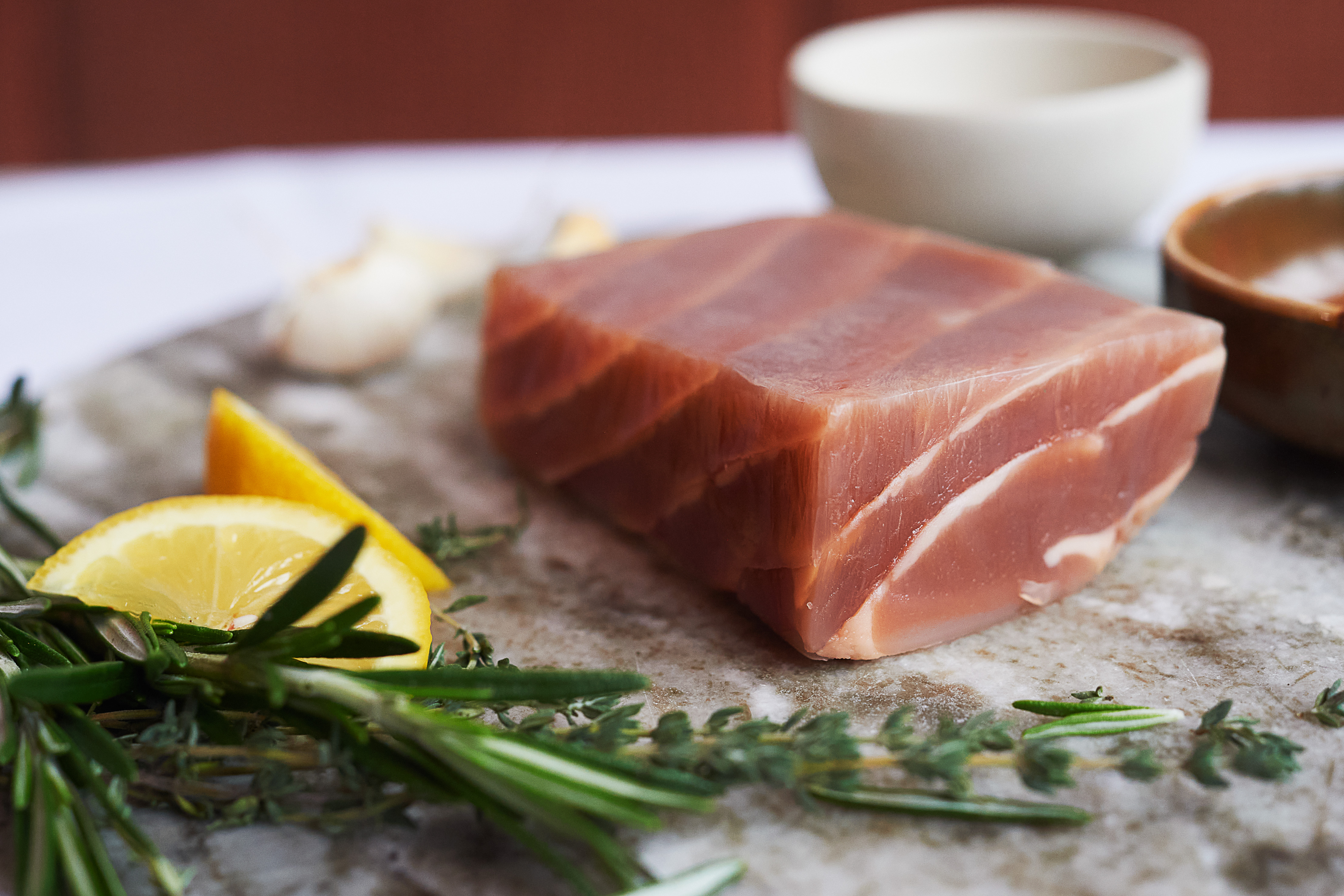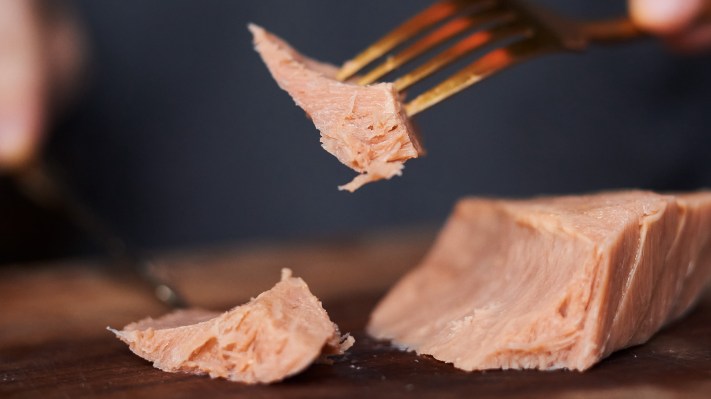New School Foods said its muscle fiber and scaffolding technology to produce whole-cut fish alternative products is now at a point where it can be demonstrated and a pilot facility built. The company’s first product is a plant-based filet that looks, cooks, tastes and flakes like wild salmon.
The announcement comes after the Toronto-based plant-based seafood maker secured $12 million in seed funding. Investors participating include Lever VC, Hatch, Good Startup, Blue Horizon Ventures, Clear Current Capital, Alwyn Capital, Basecamp Ventures, Climate Capital, FoodHack/HackCapital, Joyance Partners and Joyful Ventures. New School Foods also has grants from Canadian government agencies, including Protein Industries Canada. The company has now raised $13 million in total.
The three-year-old company is swimming in waters that have gotten crowded lately as startups all over the world get in on a market poised to reach a value of $1.6 billion in the next 10 years.
Venture capital has been flowing into the space, too — around $178 million of investment was in the first half of 2022. One of the biggest venture capital investments into alternative seafood last year went into Wildtype, which raised $100 million in a Series B round for its cultured salmon product. Meanwhile, Plantish, Bluu Seafood and the ISH Company are also working on salmon alternatives.
“Seafood, at the moment, is a new piece of the puzzle in terms of technology,” New School Foods CEO Christopher Bryson told TechCrunch.
Finding the technology
Bryson got involved in alternative seafood about five years ago after selling his company, Unata, an e-commerce platform for major grocery stores, to Instacart. He went looking for his next “big thing” and ended up learning about factory farming and how animals were treated, which he described as “a life-changing event.”
“It didn’t seem like enough people were worrying about it,” he added.
Bryson explained that the startup ecosystem didn’t reward R&D, so since he didn’t have a product for investors to taste, he instead took the angel investor approach — looking at early technologies, especially those that weren’t yet being utilized for alternative proteins.
While searching for research to invest in, what he found was not a lot of technology addressing whole cuts of proteins and very few focused on seafood. Bryson saw high-moisture extrusion being used often, but found that the high heat used was pre-cooking the food, which didn’t yield the kind of texture and muscle fiber he was looking for.
“So we decided to create a new technology that didn’t rely on high-moisture extrusion and was better suited for whole cuts,” he added.
What New School Foods came up with is a proprietary muscle fiber and scaffolding platform for making whole-cut meat alternatives with the same colors, flavors, fats, texture and mouthfeel of traditional fish.
Rather than a high-temperature method, its technology relies on a series of cold-based processes to create a product that starts off looking “raw,” and when cooked, flakes similar to traditional salmon.
“All these cold steps in our process can use off-the-shelf equipment from adjacent industries that use freezing but not for this purpose, and that’s really important because a lot of the stuff that’s trying to be an alternative to extrusion is pretty science fiction, and there’s no scaled up infrastructure,” Bryson said. “When we’re talking about feeding the world in a relatively short period of time, by using off-the-shelf, scaled up equipment that does high volume, we can very quickly and reliably get to feeding a very large number of people.”

New School Foods raw plant-based salmon filet Image Credits: New School Foods
Scaling and production
Bryson intends to use the new funding to continue focusing on R&D; expand the company’s team of about a dozen people, particularly in the area of food scientists; scale up its scaffolding technology; and build out a research and production facility.
New School Foods broke ground on a facility in Toronto last month and will be unveiling the plan for this in a few months, he said.
Meanwhile, the company is planning to sell through restaurants and has started a chef-only pilot program across North America to start a product council and also drum up interest as it readies the product for distribution later this year.
“In parallel to building out our salmon product and refining that with restaurants over the course of this year, we’re also building our own production facilities,” Bryson said. “We also know that this technology has potential way beyond salmon, so we are not planning to stop there.”
